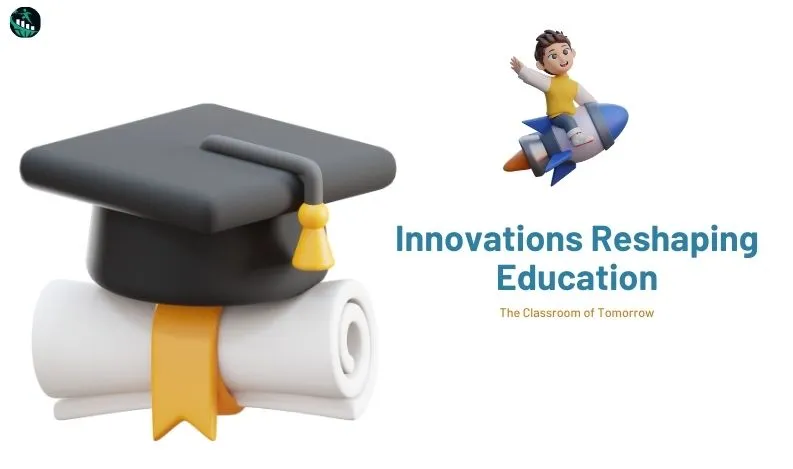
The Classroom of Tomorrow: Innovations Reshaping Education
The field of education is poised at the brink of a revolution, powered by remarkable technological advancements. As we move deeper into the digital era, the traditional educational models are being challenged and redefined. From augmented reality that brings textbook diagrams to vivid life, to artificial intelligence that customizes learning paths, today's students are experiencing a learning environment that is more engaging, effective, and tailored than ever before. This comprehensive blog will explore the transformative innovations that are reshaping how we think about and engage with education.
Creating Interactive Learning Experiences
The Role of Virtual Reality (VR) and Augmented Reality (AR)
Virtual and augmented reality technologies have transformed the conventional learning environment by providing immersive learning experiences that were once unimaginable. In a history class, VR can transport students to ancient Rome, allowing them to explore the Colosseum in its majestic heyday. For science classes, AR can overlay interactive 3D models of human anatomy over a student's peer or even themselves, making the study of biology highly interactive and engaging. Schools like the Stanford University School of Medicine are already incorporating AR into their courses to great effect, providing a blueprint for others to follow.
Gamification of Learning
Gamification incorporates elements like point scoring, leaderboards, and achievement badges into the learning process, thereby making education both fun and productive. Platforms like Duolingo have successfully used gamification to transform mundane tasks like language learning into a dynamic and addictive game. By challenging students to beat their scores, surpass their friends, and achieve new levels, educational content becomes more engaging and retention rates improve significantly.
Personalized Learning Through AI
Adaptive Learning Technologies
Artificial intelligence is revolutionizing personalized education through adaptive learning technologies. These platforms, such as DreamBox Learning for mathematics, use sophisticated algorithms to adapt in real time to the needs of individual students. They analyze thousands of data points to provide customized exercises that challenge students at just the right level and pace. This individualized approach helps in identifying and addressing learning gaps more effectively than ever before.
AI Tutors and Assistants
AI tutors and assistants are becoming increasingly sophisticated and can provide additional support to students outside of classroom hours. These AI systems can answer questions, provide explanations, and offer practice problems to reinforce learning. Tools like Carnegie Learning’s Mika software provide one-on-one tutoring tailored to the needs and learning pace of each student, effectively offering a personalized learning assistant that is available 24/7.
Enhancing Collaboration with Digital Tools
Cloud-Based Collaboration Platforms
The proliferation of cloud technology has greatly facilitated collaborative learning. Students across different geographies can work together on projects, share notes and resources, and participate in discussions via platforms such as Google Classroom and Microsoft Teams. This not only fosters a sense of community and teamwork but also prepares students for the increasingly digital and collaborative nature of the modern workplace.
Social Media as Learning Tools
Social media platforms designed specifically for educational purposes, like Edmodo, allow for safe interaction between students and teachers. These platforms enable educators to extend the classroom by facilitating discussions, sharing educational resources, and organizing group activities. They also allow for real-time feedback and continuous communication, which are crucial for effective learning.
The Future of Assessments
Digital Portfolios and Continuous Assessment
Digital portfolios represent a paradigm shift in student assessment by focusing on continuous, qualitative assessment instead of one-time, quantitative tests. Platforms like Seesaw allow students to build portfolios showcasing a variety of work and learning styles over time. This approach not only provides a more rounded view of a student’s capabilities but also supports a growth mindset where learning is seen as an ongoing process.
Real-Time Feedback Mechanisms
Immediate feedback is crucial for the learning process, and digital tools are making this more feasible than ever. Applications like Kahoot and Quizizz allow teachers to conduct assessments that provide instant feedback not just to students but also to educators, who can quickly gauge understanding and adjust their teaching strategies accordingly. This feedback loop enhances the overall effectiveness of the educational process.
Conclusion
The classroom of tomorrow, equipped with cutting-edge technologies and innovative pedagogical strategies, promises to revolutionize the educational landscape. These innovations not only make learning more personalized and engaging but also ensure that it is aligned with the demands and opportunities of the 21st century. As educators and technologists continue to collaborate, the potential to transform education into a more inclusive, effective, and enjoyable journey is immense. The future of education looks bright, and it is here today.
Also Read:-



Recent Comments: